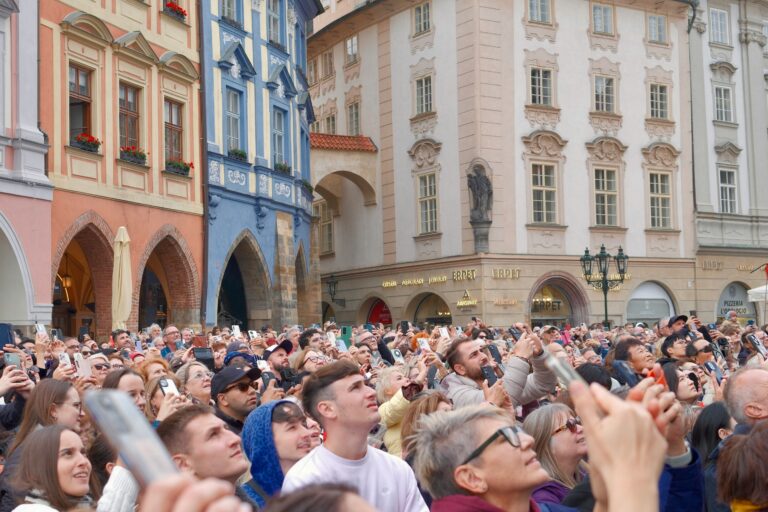Beyond High-Value: Why High-Yield Tourism Changes Everything
Recently, I have been seeing the term “High-Yield Tourism / High-Yield Travelers” increasingly pop-up, and being used interchangeably with “High-Value Tourism / High-Value Travelers.” Media articles and travel industry press releases are conjoining the terms and blurring important lines of distinction. So, lets clearify the difference.
Having spent decades navigating the evolving landscape of global tourism, I’ve witnessed first-hand how our industry’s language shapes its direction. The distinction between “high-value” and “high-yield” tourism is more than semantics. Separating the terms can inform how destinations, businesses, and communities craft strategy, attract travelers, and define their long-term success.
Last month at the UN Tourism Executive Council Meeting in Spain, a tourism minister pulled me aside during a conference break. “Jens,” he said, “We’re already doing high-value tourism. We attract wealthy visitors, luxury hotels, premium experiences. Isn’t that enough?”
I understood his confusion. For years, our industry has misunderstood “high-value travelers” as those with thick wallets and platinum cards. We’ve built entire strategies around attracting them, measuring success by their spending.
But here’s what we’ve missed: a software developer from Berlin who spends three months learning traditional weaving in Laos, paying $50 a day, creates more lasting value than a luxury tourist spending $500 for a single night.
The High-Value Trap
Let’s first ensure we don’t fall into the “High-value Tourism Trap”, which is seductive in its simplicity. Target wealthy travelers. Build luxury infrastructure. Charge premium prices. Count the cash. It’s a strategy I advocated for years at Fairmont Hotels & Resorts, creating packages where guests could drive Porsches through Napa Valley or get backstage passes to the Boston Symphony.
But after 25 years working across four continents, I’ve witnessed these hidden failures. In the Caribbean, I’ve seen luxury resorts where 90% of revenue flows to foreign investors while local communities remain excluded from their own beaches. In Thailand, I’ve watched destinations spend millions attracting so-called high-value visitors who stay three nights, contribute little beyond their credit card transactions, and leave no positive benefits.
High-Value Tourism: The Quest for Quality and Connection
When experienced practitioners and policymakers speak of “high-value tourism,” they’re often referring to a philosophy that prioritizes quality over quantity. High-value travelers aren’t simply those who spend the most. Rather, they are visitors who actively engage in local culture and living, respect the environment, and create meaningful exchanges with people and places. Destinations pursuing high-value tourism seek guests who contribute economically, socially and culturally. It’s about measuring the depth and breadth of impact, not just the top line.
In practice, “high-value” might mean a couple that spends a week learning to weave silk in Laos, a foodie group participating in a pasta cooking tour in Italy, or a solo adventurer attending an ocean conservation workshop on the Great Barrier Reef. These travelers stay longer, interact more intimately with communities, and leave a legacy of goodwill and shared growth. They are also more likely to return.
High-Yield Tourism: Maximizing Balanced Returns
By contrast, “High-yield tourism” brings the conversation into sharper economic focus, but not in the traditional sense of chasing only big spenders. Yield, a term aligned from finance and agriculture, encourages us to look at the “return on experience” for both destinations and hosts. What is the net benefit when we consider revenue, jobs created, seasonality, use of local suppliers, and community well-being?
High-yield tourism measures different equations. It’s not about how much visitors spend, or when they spend it, it’s about the value that endures after they leave.
High-yield traveler trips generate a higher share of profit that stays within local communities, supports sustainable initiatives, and stimulates investment in people and infrastructure. This is not always synonymous with luxury. Sometimes, a backpacker who travels off-season, eats locally, and stays in family-run lodges creates a higher per-dollar impact than a cruise passenger who passes through fleetingly.
Let me share a story that crystallized this for me. In a village outside Luang Prabang in Laos, I met a grandmother teaching traditional weaving to international textile artists. These weren’t wealthy travelers, many were struggling artists themselves. But they stayed for weeks, learning not just techniques but the stories woven into each pattern. They paid modest fees, but every dollar went directly to village families. More importantly, they documented disappearing techniques, connected the village to global textile markets, and several now import village products to their home countries.
That grandmother’s students generate perhaps $2,000 each in direct spending. A luxury hotel guest might spend that in one night. But calculate the yield: knowledge preserved for future generations, young villagers inspired to learn traditional crafts, sustainable income streams created, global advocates cultivated. The artists didn’t just visit, they became part of the village’s future.
Yield transcends economics. High-yield travelers create ripple effects: They return repeatedly, deepening relationships. They bring others from their communities. They share authentic stories that attract similar travelers. They contribute skills and knowledge. They often redirect their entire lives to support places they’ve connected with deeply.
After years of observation, I can spot high-yield travelers immediately. They’re not identified by their bank accounts but by their behaviors:
They don’t ask “What’s there to see or do?” but “What can I learn and contribute?”
Why the Difference Matters
Moving from high-value to high-yield thinking is an essential mindset shift as we strive for regenerative tourism, where destinations aren’t just surviving, but thriving. High-value focuses on the character and intentions of visitors, while high-yield challenges us to innovate business models, partnerships, and policy so that every visit results in a “win-win” across stakeholders.
While not 100% perfect, destinations such as Bhutan, New Zealand, and Scotland have demonstrated that by aligning strategies around yield, and not only value, they create cycles of reinvestment, innovation, and pride.
High-yield tourism asks tough questions about who ultimately benefits, and how we design for prosperity that is shared, sustainable, and resilient.
The Strategic Imperative
Here’s what that tourism minister I met at the UN Tourism Meeting misunderstand: High-yield tourism isn’t about excluding luxury or wealthy visitors. It’s about recognizing that value comes in myriad forms. The highest yields often come from unexpected sources. A destination can have both high-value and high-yield strategies. But if you only measure fiscal value, you might miss your greatest opportunities
As co-founder of High-Yield Tourism, I’m convinced the future belongs to those destinations, and their stakeholders and partners, that master both. Curating high-value experiences for travelers paired with engineering high-yield outcomes for communities. The challenge isn’t to choose one over the other, but to blend both into a model where tourism is a positive force.
Designing a High-Yield Tourism Strategy differs from conventional tourism marketing strategies. It’s a complex undertaking, leveraging decades of on-the-ground experience and data-driven expertise. Real transformation demands courage.
We ask travel and tourism leaders to look past the comfort of problem-solving and imagine what their destination could become. This model empowers communities to be co-creators of their future, focusing not on what they lack but on the strengths and opportunities that fuel progress. It’s a process requiring consultation, transparency, agility and a willingness to turn aspirations into meaningful, measurable results.
But fair warning: This isn’t for destinations happy with counting arrivals while their communities suffer.
High-yield strategies are for tourism boards and travel operators ready to lead, not follow. For those that look beyond accumulating visitor spend toward cultivating advocates that contribute to preserving what makes each place special.
Listen to our podcast Episode 18 on "High-Yield Tourism vs. High-Value Tourism: What Are The DIfferences - And Why Do They Matter?"
more insights

The AI Divide in Tourism: How Big Data Is Leaving Small Operators Behind
The AI Divide in Tourism: How Big Data Is Leaving Small Operators Behind Artificial intelligence (AI) and big data are transforming the tourism industry. From

Introducing The Strength-based Strategy Framework To Drive High-Yield Tourism
Introducing The Strength-based Strategy Framework To Drive High-Yield Tourism How an Adapted Business Model Is Revolutionizing Destination Planning: From Volume to Value soar /sɔː/verb: achieving

Beyond Boom and Bust: Rethinking Tourism Policy for Sustainable Growth
Beyond Boom and Bust: Rethinking Tourism Policy for Sustainable Growth Tourism is often hailed as a key driver of economic growth, cultural exchange, and local
High-Yield Tourism
68 Circular Road #02-01
Singapore 049422
Email: hello@highyieldtourism.com
Sign-up to receive updates about High-Yield Tourism, industry news, and reports.
